Photography by Ivan Brun
Successful Lakeland artist Gabriela Jaxon looks to redefine street art and encourage the next generation of artists.
No one has ever said being an artist is easy. But if the history of art has proven anything, it’s been especially hard for women artists. And even more so for women artists of color. And even more so for immigrant women artists of color. Toss the arena of public or street art into the mix, and you’ve got an uphill battle toward artistic survival.
But perseverance is the key. Not every artist finds success, to be sure; but desire, talent, guts, and self-confidence surely help in that trajectory toward renown and respect.
And respect — or the related quest for it — is the driving concern for rising Lakeland-raised artist Gabriela Jaxon.
Certainly, with more than 15,000 Instagram followers (as of this article’s writing), Jaxon is not lacking for attention nor for notice for her public-facing artworks, many viewable around the city of Lakeland, throughout Polk County and Florida, and even in New York City. A native Peruvian who honed her studio art skills at Harrison School for the Arts in Lakeland as a teenager before graduating with her bachelor’s degree in psychology from Florida Southern College in 2015, Jaxon finds herself at a tenuous point in her flourishing career: she is gaining prominence and commissions for her large-scale public murals and her experimental works in mixed media, but she is also grappling with the realities of being an artist in 2021 America whose public work by its very nature is so easily consumable that its authorship as valuable artwork by a working artist can be taken for granted.
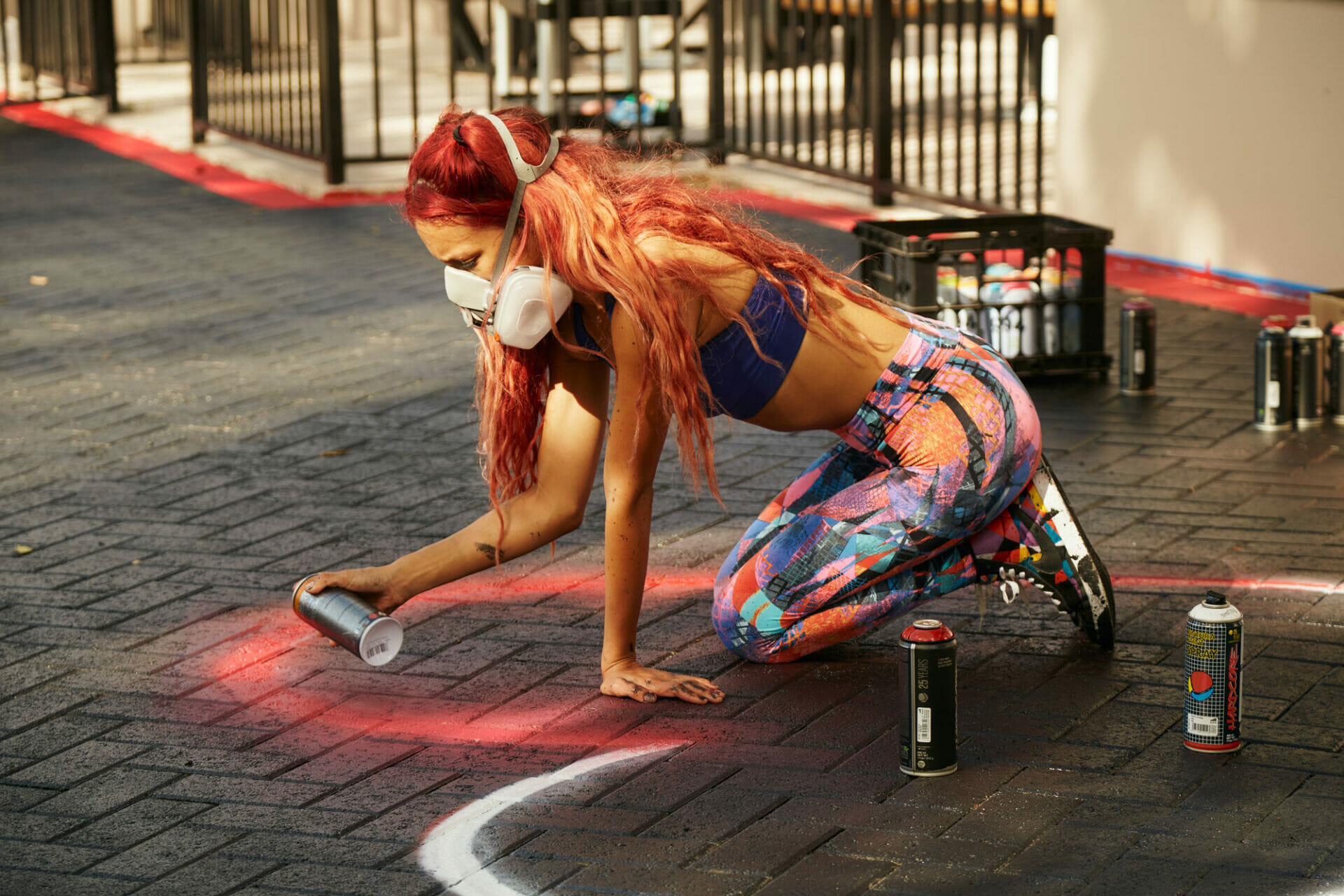 Indeed, the inherent immediacy of public art is both its greatest asset and paradoxically its biggest deficit, and Jaxon realizes this.
Indeed, the inherent immediacy of public art is both its greatest asset and paradoxically its biggest deficit, and Jaxon realizes this.
“With public art, the community can take photos and post images of the art, but sometimes it can be frustrating to make public art that gets used for commercial promotion without credit,” Jaxon explains.
With artists like Jaxon hoping to make their names in any way possible, public art, accessible at its very roots, has found its way into the world of increased accessibility, not merely by our being able to see public art physically but also by seeing it regularly and anytime through any digital screen, reproduced over and over and over and shared endlessly.
There is this slippage between public art and its authorship and who gets to use it and how. Public art can be enjoyed without barriers by all audiences, an undeniable plus when compared to art seemingly cosseted away in the elite, white-walled spaces of galleries and museums. By virtue of its alternative everyday-ness and presence in the “real world,” public art is thus also ostensibly viewable anytime and “owned” collectively, broadly impactful and wonderfully familiar, but also easily divorced from its author, the lengthy process of its creation, and the context of its commission.
“A mural is not just the end product but the result of a long process,” Jaxon says. Further, all art, public or not, is also reflective of its artist’s specific lived experiences.
Jaxon came to Florida from Peru at age eight with an artist’s visa as a young dancer, and her experiences as an immigrant — and now DACA DREAMer — and woman artist of color infuse the tenor and ambitions of her daily and professional lives. She aptly sees the art world and her rising place in it through the various lenses of her not uncommon but unique American story. What does it mean to be a young woman artist of color who emigrated to the United States as a child and whose work draws wide notice but who still feels undersung, underrespected, underappreciated, and underpaid?
“My goal is to master the different media to be able to flex left and right. I want to go abstract and juxtapose it with the figurative.”
Jaxon sees the purity of public art; it is, after all, art intended to give back, to communicate to a wider community, and, in that way, to serve a larger purpose. However, she also sees the inherent drawbacks of public art and its integration into the rhythms of our daily routines. The public artist — even as public a public artist as Jaxon — can often be lost in the recognizability of the works of art themselves. Who owns public art? Who is the author of it? Who gets to control its promulgation?
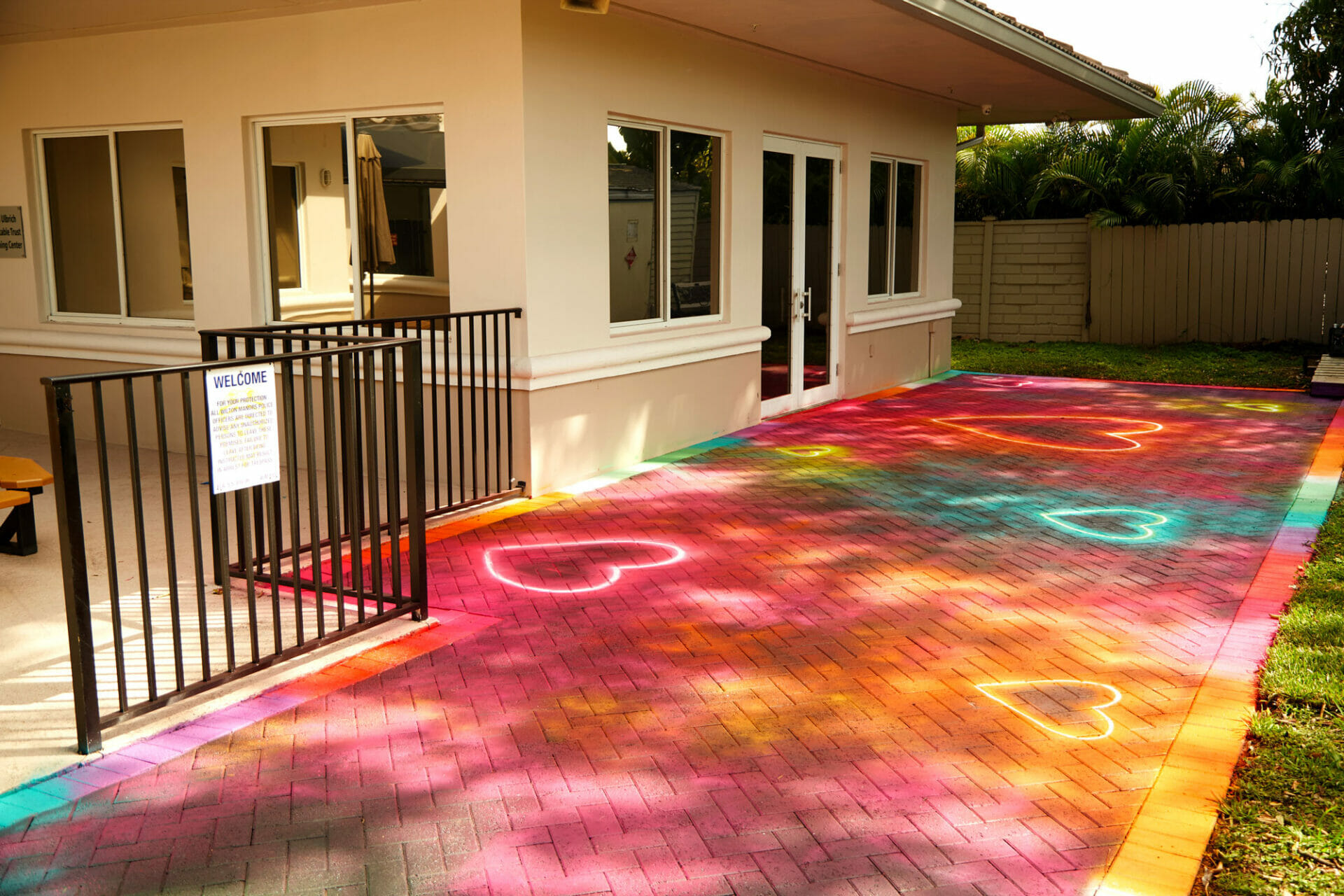
Believing in Girls Empowerment Project,
Pace Center for Girls Broward
Jaxon grapples with all these concerns constantly, while still holding fast to her core motivation to inspire with her art. She wants her most public work to drive future artists. She wants the process demanded by the creation of her murals to offer outlets for budding artists. She wants anyone who passes by to think about the possible meanings of her work. But she also wants to be recognized for it.
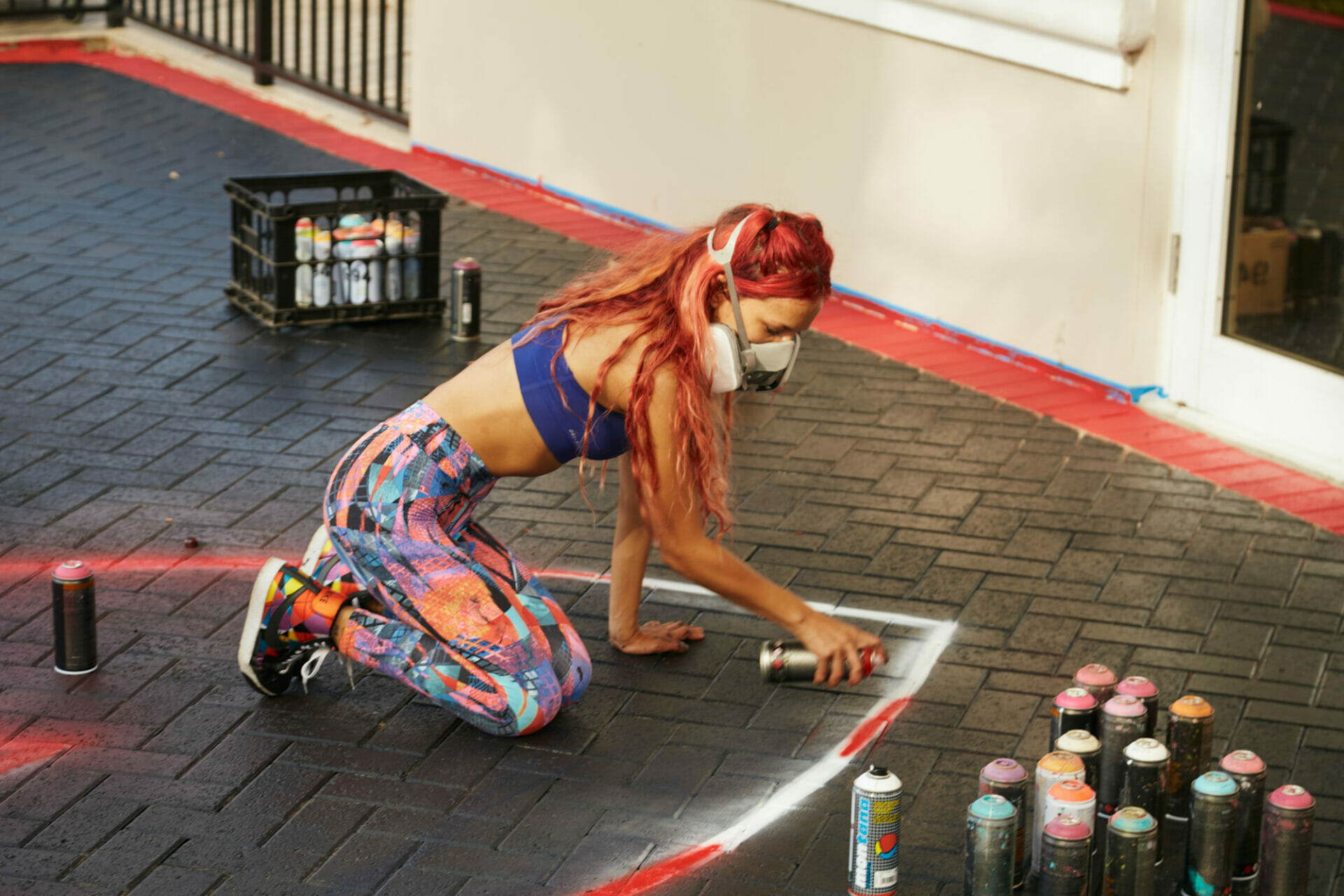
Jaxon has been commissioned to create murals nationwide, organize art and music initiatives and events, and has exhibited her works in galleries and public streets nationwide.
There is also a stigma about street art, as Jaxon explained when I visited with her this month at the new Lakeland apartment complex Mirrorton to chat about her work, life, and career aspirations and to see her recent mural project. There, 15 feet off the ground in the complex’s clubhouse, you will observe an intriguingly street-culture-inflected abstract mural that Jaxon created with the decidedly non-high-art medium of spray paint.
“For a long time, anything made with spray paint was considered graffiti or vandalism,” she says. “It was seen as no good or ‘they’re criminals.’”
While many might be quick to call Jaxon’s work graffiti art, graffiti art implies tagging. It suggests text-based work made on the fly, not deliberate, considered, and not nearly as figurative as the majority of Jaxon’s work. In fact, Jaxon creates collages, culled from print volumes and magazines, to create the experimental preliminary studies that will end up as her finished smaller paintings and large-scale mural works.

“Forbidden Fruit,” a a 14’ x 70’ office wall collage mural design for Quinlan Development Group. Location: Pioneer Building in Downtown Brooklyn
“A mural is not just the end product but the result of a long process.”
The randomness of visual juxtapositions of forms, shapes, and iconography spliced together in collages creates the dynamic quality of Jaxon’s completed compositions — images placed side by side that did not belong together to begin with but which meld together via the artist’s hand. The Mirrorton project is non-figurative, mostly abstract with some text, but Jaxon is correct when she explains that, if anything, her art is “graffiti-esque but modern, more like abstraction created with spray paint.”
To create her enormous murals, Jaxon, at five-foot-two, climbs atop huge mechanical lifts of the kind used in building construction to allow her to soar above ground level. In her eager acceptance of public and commercial commissions that anyone can see, she hopes to motivate others with her larger-than-life productions, proving that no one’s physical stature, let alone their sex, gender, or minority status should ever be an obstacle to self-expression on the grandest of scales.
“I think there should be more respect for spray-painting artists,” Jaxon reflects, “and for artists who spray paint.”
Jaxon’s entrance into the world of public and street art did not come until 2016, with her arrival post-graduation in New York City, the indisputable center of the U.S. art world, where she was eager to carve out a niche for herself.
“Kids need to be exposed to art to know that there is this outlet for them.”
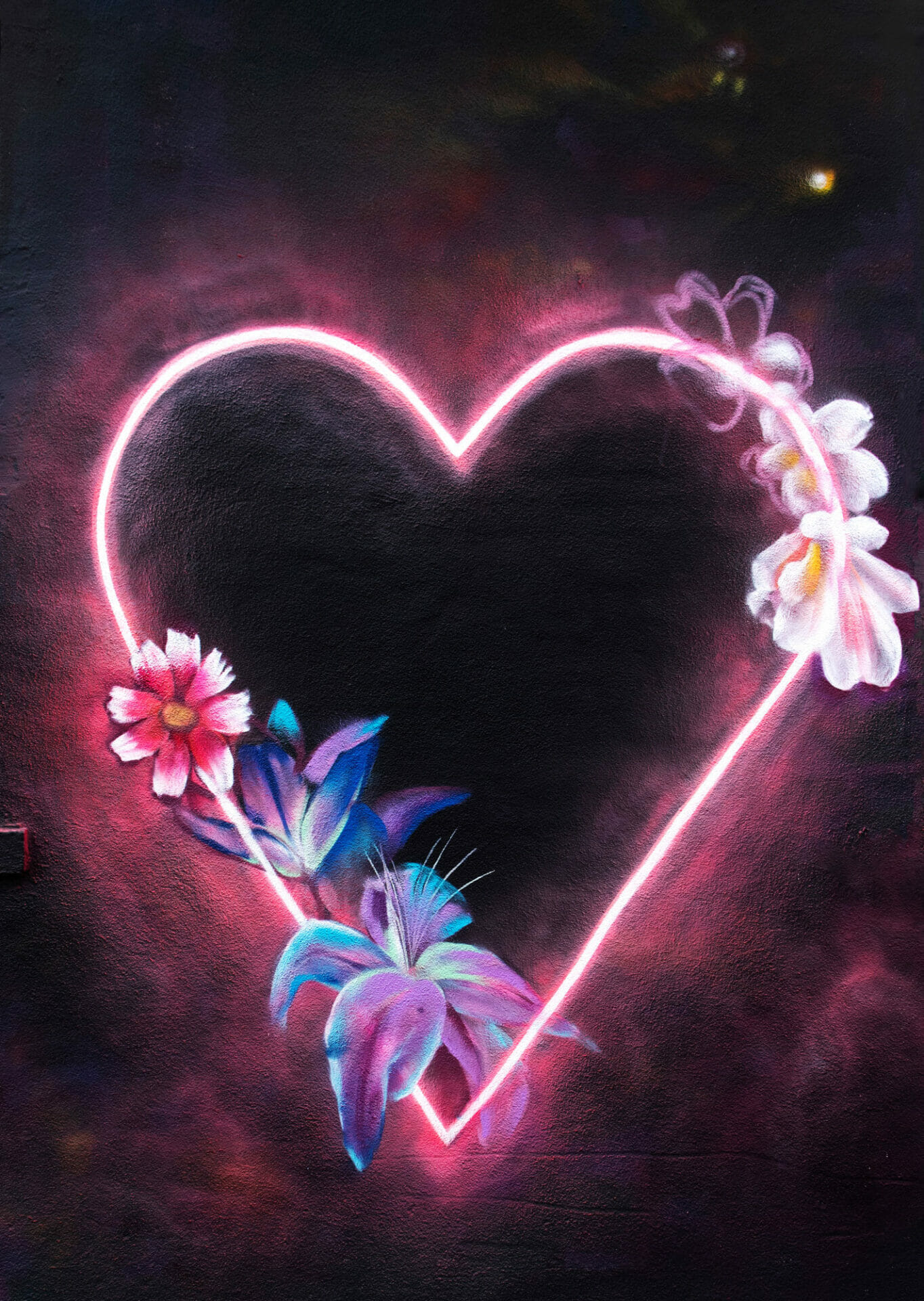 Since then, her professional career has been peripatetic. It has taken her from Lakeland to New York — where she apprenticed under the street artist Jerkface (yes, that is his name), honed her craft both on the large scale (as a muralist) and on the more intimate scale (working principally in collage), and gained attention from galleries and companies eager to show and commission her work — to Miami and back to Lakeland with her sights set presently on projects that will take her to Colorado and California in the months to come.
Since then, her professional career has been peripatetic. It has taken her from Lakeland to New York — where she apprenticed under the street artist Jerkface (yes, that is his name), honed her craft both on the large scale (as a muralist) and on the more intimate scale (working principally in collage), and gained attention from galleries and companies eager to show and commission her work — to Miami and back to Lakeland with her sights set presently on projects that will take her to Colorado and California in the months to come.
“My goal is to master the different media to be able to flex left and right,” she says. “I want to go abstract and juxtapose it with the figurative.” Whatever the project, whatever the commission, whatever the location, Jaxon wants to be considered and respected as a multi-hyphenate talent and succeed in this art world that seems too often stacked against women artists and artists of color.
“I would like to be famous,” Jaxon muses, “but famous for making a good impact and a difference.”
Drive up North Florida Avenue in Lakeland, and you’ll see Jaxon’s most prominent local work, a 34-foot-tall mural adorning the side of Thom Downs Antiques Building. You can’t miss it. If Jaxon is the face of public art in Lakeland right now, then her mural is also quite literally the face of public art in Lakeland right now. Truly, when you see Jaxon’s mural, you’re confronted intriguingly with the huge and confident face of a woman (albeit not a self-portrait of Jaxon) staring right back at you. You note instantly that she has not two but four eyes — doubly attentive, doubly aware, and doubly capable of making you think about this female figure whose very essence is inextricably attached to street art.
Might we see in her a metaphor for Jaxon? For her ambitions as a public artist?
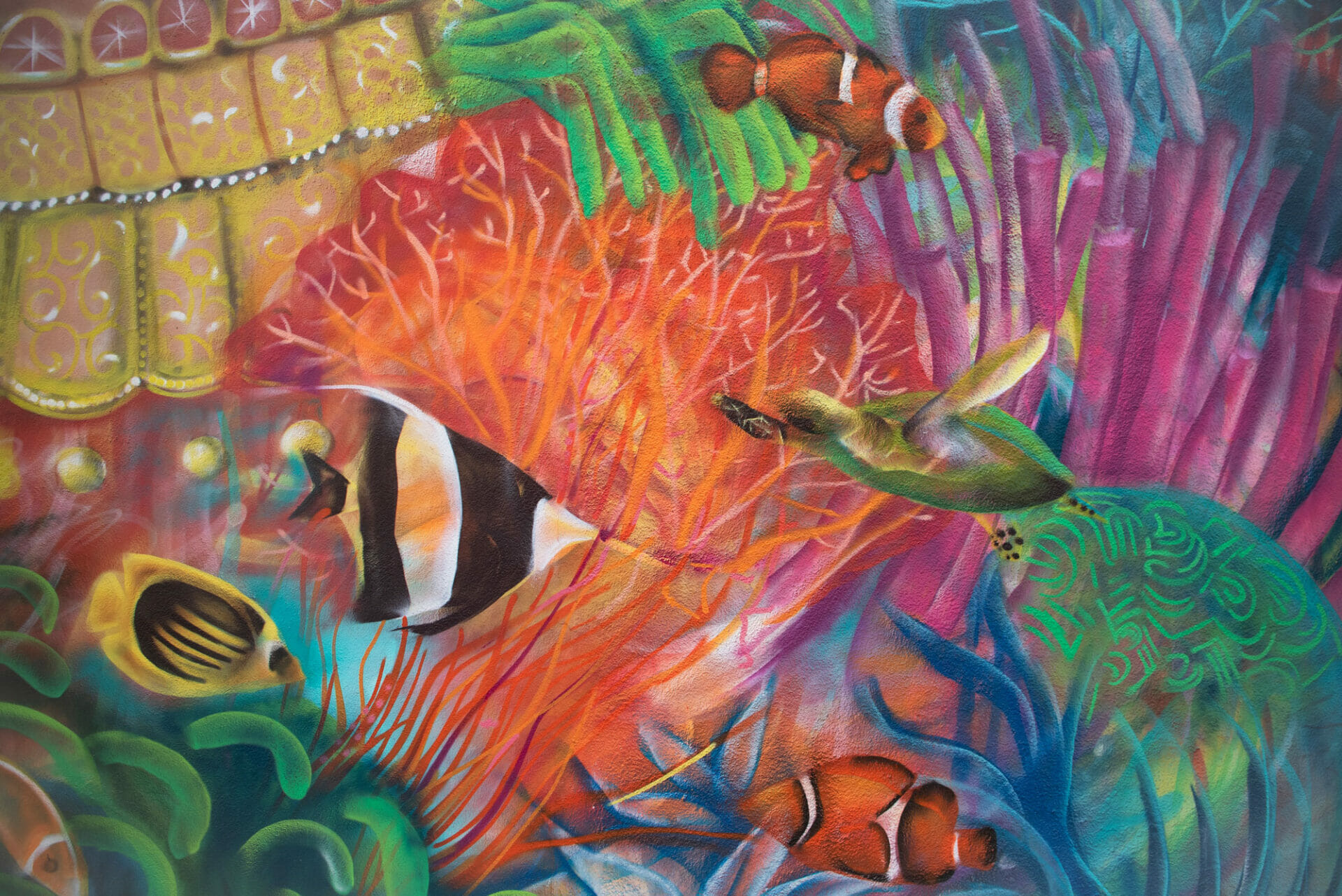 In the end, Jaxon hopes that with her public art and social media recognition she can help change people’s attitudes and convince even skeptics that “street art” can be positive, especially as it can encourage the next generation to express themselves and make art that speaks to them and their own life experiences. And despite all of Jaxon’s concerns about acknowledgment of her artwork and her ability to succeed in the cutthroat art world, she sees deep value in what she has achieved thus far.
In the end, Jaxon hopes that with her public art and social media recognition she can help change people’s attitudes and convince even skeptics that “street art” can be positive, especially as it can encourage the next generation to express themselves and make art that speaks to them and their own life experiences. And despite all of Jaxon’s concerns about acknowledgment of her artwork and her ability to succeed in the cutthroat art world, she sees deep value in what she has achieved thus far.
“Kids need to be exposed to art to know that there is this outlet for them. Why not add art to the mix?” Jaxon asks, reflecting on the potential legacy of her works in the region and beyond. “Painting with a paint brush might not seem so cool. But with a spray can? And you can get famous?”
gabrielajaxon.com
